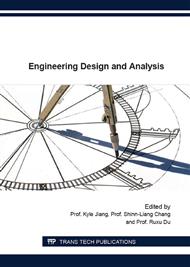p.71
p.77
p.82
p.88
p.93
p.99
p.105
p.113
p.118
Effect of High Pressure Coolant on Tool Wear Phenomenon during Machining of Titanium Alloy Ti6Al4V
Abstract:
Titanium alloys are referred to difficult-to-cut materials because of its some inferior properties like low thermal conductivity and high chemical reactivity. To improve machinability of these alloys one way is to use cutting fluids which removes the heat generated at the chip tool interface during the machining process. But coolant with low pressure and improper delivery is not able to break the vapor barrier created by high cutting temperature. The present work investigates the effect of using high pressure coolant system (50 Bar) on machinability of Ti6Al4V. The machinability was measured in terms of tool wear. The dominant tool wear mechanism was investigated by using scanning electron microscopy and energy dispersive X-ray analysis of worn out cutting tool surfaces. Abrasion wear on flank face and crater wear on the rake face was observed as a dominant tool wear mechanism. Along with this diffusion of titanium from the work surface to tool face is also confirmed.
Info:
Periodical:
Pages:
93-98
Citation:
Online since:
February 2016
Authors:
Keywords:
Price:
Сopyright:
© 2016 Trans Tech Publications Ltd. All Rights Reserved
Share:
Citation:


